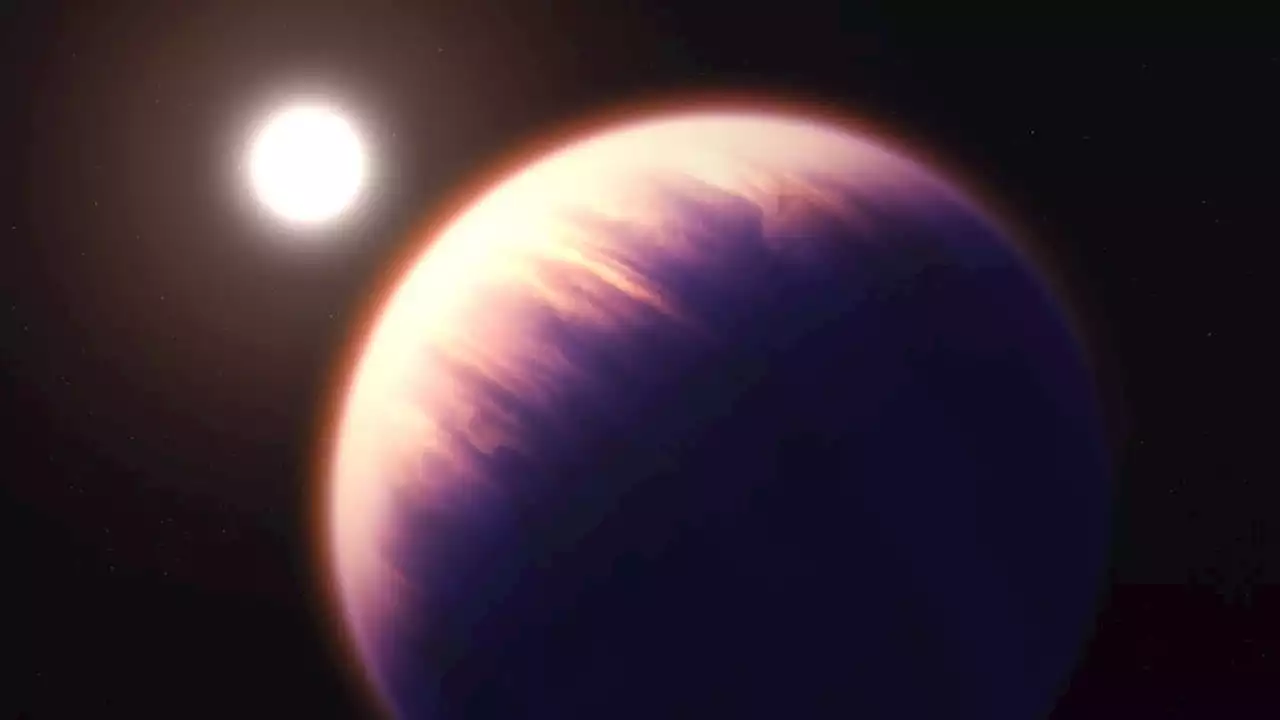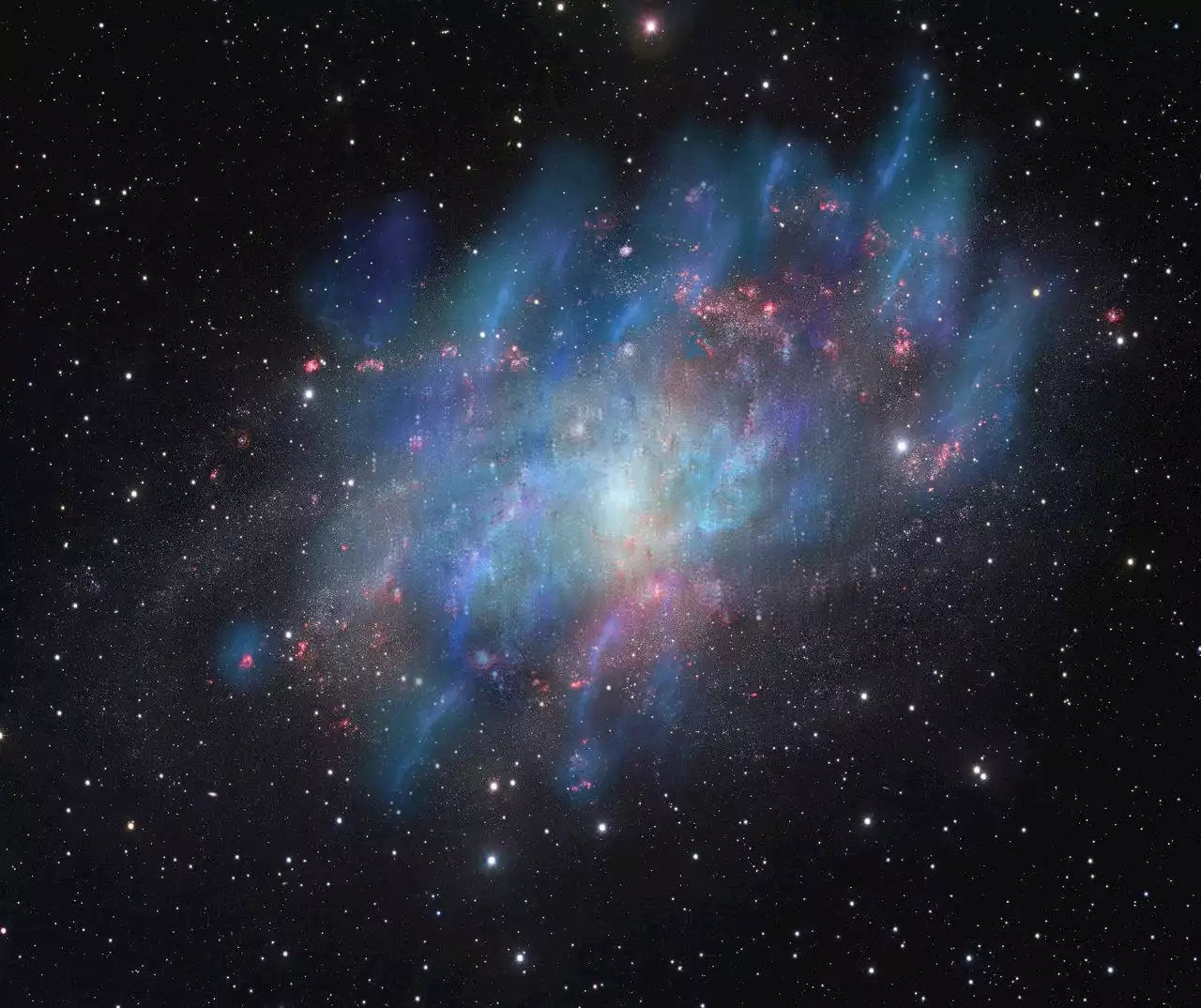Astronomers have used the JamesWebbSpaceTelescope to get the most in-depth look yet at the atmosphere of planet WASP-39 b.
One of the big advances promised by the James Webb Space Telescope is the ability to investigate exoplanets in greater detail than ever before. Webb has already imaged its first exoplanet and made the first detection of carbon dioxide in an exoplanet atmosphere, but now astronomers have used the telescope to get the most in-depth look yet at the atmosphere of planet WASP-39 b.
Webb uses instruments called spectrometers which break light down into different wavelengths to see which ones have been absorbed by various molecules in an atmosphere. This allows researchers to see spectra of the planet’s atmosphere, telling them what elements are present, which the researchers describe as a “game changer” for the study of exoplanets.
This planet is very hot, orbiting its host star every four days. In the atmosphere, researchers found water and confirmed the previous finding of carbon dioxide, but most importantly they found sulfur dioxide for the first time. This is created by light from the star interacting with the atmosphere and creating new molecules, and this is the first time that this photochemistry has been observed on an exoplanet.
Related Learning about an exoplanet’s atmosphere is important not only for understanding the planet as it is now but also for understanding how it formed in the past. ‘‘The moment I first saw the results of my analysis was probably the most exciting moment of my career to date,’’ said one of the researchers, Dominique Petit dit de la Roche, in a statement.
The research is early release, meaning it has not yet been published in an academic journal. It is presented in five papers, three of which are accepted and two of which are under review for the journal Nature.
ایران آخرین اخبار, ایران سرفصلها
Similar News:همچنین می توانید اخبار مشابهی را که از منابع خبری دیگر جمع آوری کرده ایم، بخوانید.
 Strangely chonky exoplanet has astronomers puzzled | Digital TrendsAstronomers recently discovered a hefty exoplanet orbiting a star similar to our sun, and it has researchers puzzled due to its tremendous density.
Strangely chonky exoplanet has astronomers puzzled | Digital TrendsAstronomers recently discovered a hefty exoplanet orbiting a star similar to our sun, and it has researchers puzzled due to its tremendous density.
ادامه مطلب »
 19 jaw-dropping James Webb Space Telescope imagesFrom nebulas and black holes to baby star nurseries and ancient collisions, the universe has never looked more beautiful thanks to NASA's $10 billion-telescope.
19 jaw-dropping James Webb Space Telescope imagesFrom nebulas and black holes to baby star nurseries and ancient collisions, the universe has never looked more beautiful thanks to NASA's $10 billion-telescope.
ادامه مطلب »
 Webb probes atmosphere of distant planet with help from U of AJames Webb Space Telescope makes more discoveries thanks to a camera designed at the University of Arizona and key roles of local scientists.
Webb probes atmosphere of distant planet with help from U of AJames Webb Space Telescope makes more discoveries thanks to a camera designed at the University of Arizona and key roles of local scientists.
ادامه مطلب »
 How JWST Is Changing Our View of the UniverseThe James Webb Space Telescope has sparked a new era in astronomy
How JWST Is Changing Our View of the UniverseThe James Webb Space Telescope has sparked a new era in astronomy
ادامه مطلب »
 Astronomers Discover Important New Information Regarding Star FormationThe study reveals cosmic rays are driving galaxies' winds An important new hint regarding how galaxies halt intense episodes of star formation has been found by astronomers using the Karl G. Jansky Very Large Array (VLA) of the National Science Foundation. Their recent research on the nearby galaxy
Astronomers Discover Important New Information Regarding Star FormationThe study reveals cosmic rays are driving galaxies' winds An important new hint regarding how galaxies halt intense episodes of star formation has been found by astronomers using the Karl G. Jansky Very Large Array (VLA) of the National Science Foundation. Their recent research on the nearby galaxy
ادامه مطلب »
 Astronomers Trace Short Gamma-Ray Bursts Farther Into Distant UniverseMost robust inventory to date catalogs SGRBs’ host galaxies and characteristics. Using observations and modeling, astronomers pinpointed the origins of 84 SGRBs, quadrupling existing samples. They found that 85% of SGRBs in the catalog come from young, actively star-forming galaxies and 20-4
Astronomers Trace Short Gamma-Ray Bursts Farther Into Distant UniverseMost robust inventory to date catalogs SGRBs’ host galaxies and characteristics. Using observations and modeling, astronomers pinpointed the origins of 84 SGRBs, quadrupling existing samples. They found that 85% of SGRBs in the catalog come from young, actively star-forming galaxies and 20-4
ادامه مطلب »
